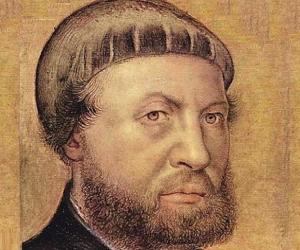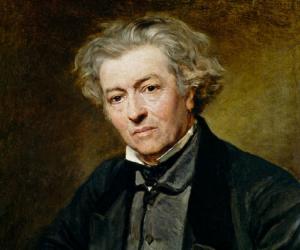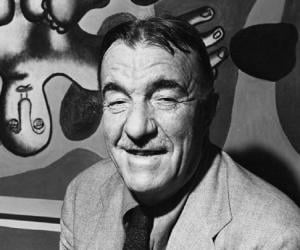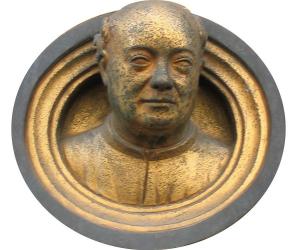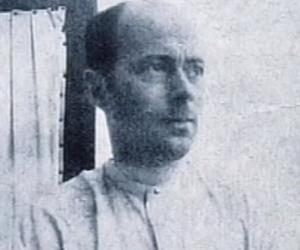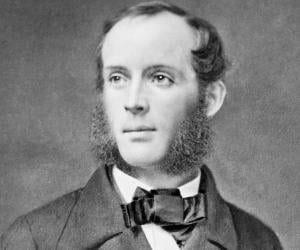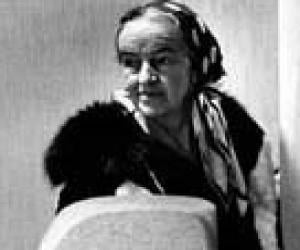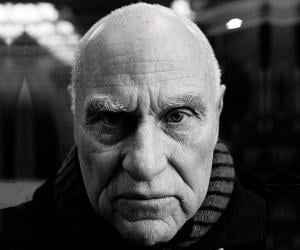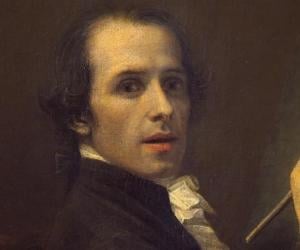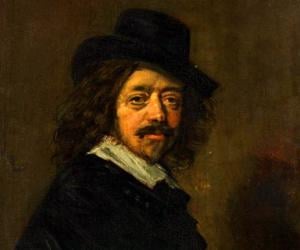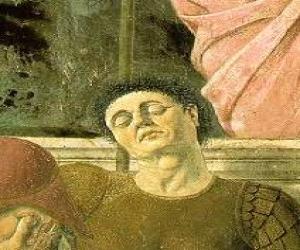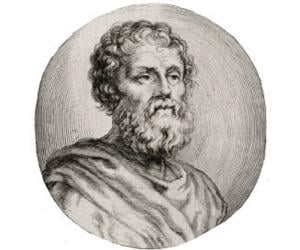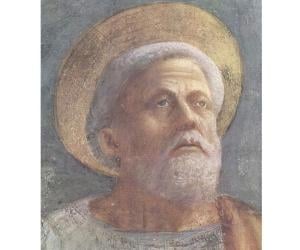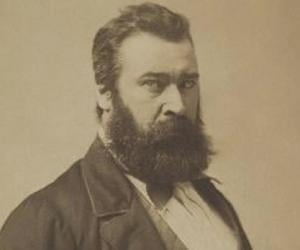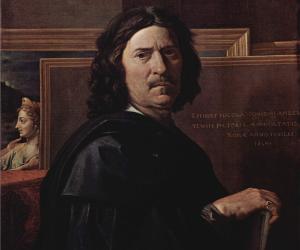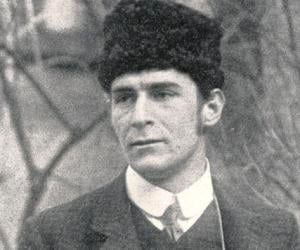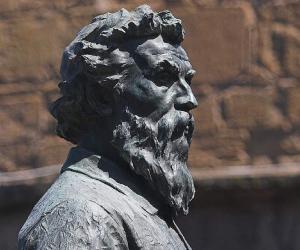Quick Facts
Died At Age: 46
Family:
father: Hans Holbein the Elder
siblings: Ambrosius Holbein
children: Philipp Holbein I
Born Country: Germany
Renaissance Painters German Men
Died on: 1543
place of death: London, England
City: Augsburg, Germany
Childhood & Early Life
Born in the free imperial city of Augsburg during the winter of 1497–98, Holbein was the son of Hans Holbein the Elder, a renowned artist and draughtsman in his own right. Both Hans the Younger and his older brother Ambrosius followed in their father’s footsteps. Holbein also had another brother named Sigmund.
In 1515, Holbein and Ambrosius relocated to Basel, Switzerland, as journeymen painters. It should be mentioned that this chronology decisively places Holbein among the second generation of the 16th-century German artists. Albrecht Dürer, Matthias Grünewald, and Lucas Cranach the Elder were born in the 1470s and 1480s, and had already established themselves as artists when Holbein was beginning his career. This makes Holbein the greatest artist of his generation.
Career in Basel
The work that Holbein did between 1515 and 1525 is highly diverse, and to a certain extent, inspired by the works of other artists. His travels to Italy in 1517 and France in 1524 helped him form his religious and artistic beliefs.
In 1519, he joined the painters’ corporation and earned the citizenship of Basel in 1520. By the following year, he was producing significant mural decorations in the Great Council Chamber of Basel’s town hall.
Holbein was part of a social circle that consisted of Basel publishers and their humanist acquaintances. From this circle, he received the commission for the portrait of the humanist scholar Bonifacius Amerbach which he completed in 1519.
In the early works of his career, Holbein demonstrated himself as a master of the contemporary German portrait genre, utilizing characterization and accessories, strong gaze, and dramatic silhouette.
In Basel, Holbein also designed woodcuts for title pages and book illustrations. His most popular work during this era is ‘Dance of Death’, a series of 41 scenes displaying “Death” intruding the everyday lives of people from various levels of society. Although Holbein drew them, they were cut by a different artist likely between 1523 and 1526. However, its publication did not happen until 1538.
In 1523, he drew the portrait of the Dutch humanist scholar Desiderius Erasmus, depicting him as a man completely disengaged from the world, concentrating on his voluminous European correspondence.
First Visit to England
In 1526, carrying a letter of introduction from Erasmus, Holbein made his way to England. Upon arriving there, he found incredible success. In 1527, he drew a portrait of the humanist Sir Thomas More. He also finished a life-size group portrait of More’s family. While the original painting has not survived, its copies have.
Return to Basel
Holbein spent about three years in England before returning to Basel in 1528. He lived there for the ensuing four years, going back to England in 1532. Purchasing a house in Basel, in St Johanns-Vorstadt, he came back supposedly to keep his citizenship. In 1531, he purchased a second house.
Before his travel to England, he had made both pro- and anti-Lutheran works. Upon his return, he converted, after some hesitation, to the new faith. This did not change the essential aspects of his works, as they always had been astute reflections of physical reality and not the products of Christian spirituality. In 1528, he produced ‘The Artist’s Family’, a portrait of his wife and two of his children, Philipp and Katherina.
Back in England
After travelling back to England, Holbein spent the rest of his life there. In 1532, he received the patronage of Anne Boleyn and Thomas Cromwell. He was appointed the king’s painter by 1535.
In the final ten years of his life, Holbein produced about 150 portraits, life-size and miniature, of both royalty and nobility. These portraits depict a variety of subjects, including an astounding series showing German merchants doing business in London, a double portrait of the French ambassadors serving in Henry VIII’s court (1533), and portraits of the king himself (1536) and his wives Jane Seymour (1536) and Anne of Cleves (1539).
In his works of this period, Holbein showed a deep interest in plants, animals, and decorative accessories. The preliminary drawings he made of sitters had notes about jewellery and other costume decorations. These objects would often denote certain aspects or events in the sitter’s life.
Holbein inarguably was one of the most exquisite portraitists and brilliant draftsmen in history. As an artist, he was never satisfied just by depicting outward appearances. Holbein delved deeper into his subject’s psyche and explored layers of symbolism, allusion, and paradox in his art.
The deaths of several of his patrons, including Cromwell, affected Holbein, but it is unknown if he faced Henry’s wrath himself. Cromwell’s death mainly happened because Cromwell had exaggerated Anne of Cleves’ beauty in his descriptions of her to the king.
Personal Life & Family
Holbein exchanged wedding vows with Elsbeth Binsenstock-Schmid, a widow a few years his senior. From her previous marriage to a tanner, she had a son named Franz. She also operated her late husband’s business. She and Holbein had a son together, Philipp, in the same year as their wedding. Later, they reportedly had several other children, including a daughter named Katherina.
In the ensuing years, Holbein became estranged from his wife. They predominantly lived separately from 1532 onwards. After his leave of absence from Basel ran out in 1540, he briefly came to see his family. Elsbeth remained in Basel with the children while Holbein lived in England.
According to his will, he fathered two children in England. The identity of their mother(s) is not known. Holbein’s unfaithfulness was not likely limited to his time in England. According to some scholars, Magdalena Offenburg, who modelled for ‘Darmstadt Madonna’ and two other portraits produced in Basel, was one of Holbein’s mistresses.
Death & Legacy
Holbein passed away sometime between 7 October and 29 November 1543. He was 45 years old at the time. In the early 17th century, Karel van Mander wrote that Holbein had been a victim of the plague. However, this statement has been regarded with scepticism by some historians, as his friends were present at his bedside at the time of his death. Peter Claussen proposes that the cause of Holbien’s death was an infection.
Even in the early days of his career, his paintings were highly valued. Many scholars have referred to him as “one-off” as he did not inspire a school of artists. Through his works, the physical appearances of many of his famous contemporaries are known today.
Facts About Hans Holbein the Younger
Hans Holbein the Younger was known for his meticulous attention to detail in his portraits, often capturing intricate patterns and textures with incredible precision.
He was a versatile artist, proficient in not only portraiture but also religious paintings, book illustrations, and designs for jewelry and stained glass.
Holbein’s work was highly sought after by the European nobility and royalty, with patrons including King Henry VIII of England and the merchant family, the Moretus family in Antwerp.
He was skilled at capturing the likeness and personality of his sitters, creating portraits that were not only visually striking but also deeply insightful.


